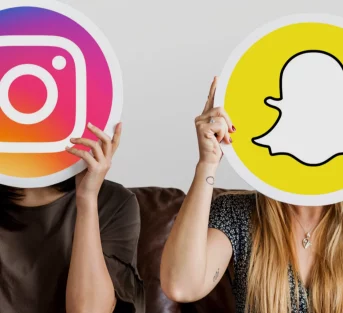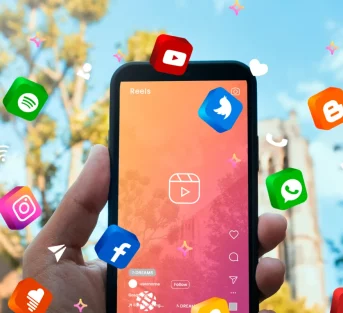Social media apps combine both communication and entertainment, making them an undeniable part of our lives. Diverse content, instant connectivity, and personalized experiences enhances their popularity. With millions of users on each platform, opportunities for engagement and monetisation soar.
Monetization strategies like targeted ads, subscriptions and data sales have turned social media into a lucrative industry.
Influencer marketing and social commerce further diversify revenue streams. Tech advancements attract users and advertisers, cementing their status as a pot of gold.
In this blog we divulge how do social media apps make money, shaping the digital landscape and influencing future trends.
TL;DR
Core Revenue Streams:
- Advertising Revenue: Display ads, video ads, sponsored posts, and influencer collaborations. Ad targeting uses AI to analyze user behavior, with cost models like CPC, CPM, and CPA.
- Subscription Models: Users pay for exclusive content or features, like LinkedIn Premium or YouTube Premium.
- In-App Purchases: Virtual goods, profile boosts, and other digital enhancements.
- Creator and Influencer Economy: Platforms share ad revenue with creators, offer tipping and donations, and support exclusive content platforms like Patreon.
- Affiliate Marketing and Partnerships: Creators promote products with trackable links, and platforms earn from sales. Product tagging and shopping features integrate e-commerce.
- E-commerce Integration: Social commerce allows direct sales through shoppable posts and live shopping.
- Data Monetization: Anonymized user data is sold for market insights and ad optimization, despite privacy concerns.
- Paid Promotions and Sponsored Content: Brands partner with influencers for organic product promotion.
- Data Licensing and API Access: Platforms sell insights and provide API access for business integrations.
Core Revenue Streams of Social Media Apps
1. Advertising Revenue (Primary Source)
Ads are among the top sources of revenue for social media platforms. There are several ways adopted:
Types of Ads:
- Display Ads – Traditional banner ads / pop-ups.
- Video Ads – Short clips shown before, during, or after content.
- Sponsored Posts – Brands pay influencers or platforms so that they may feature their content.
- Influencer Collaborations – Brands partner with creators to promote their products, services or brand.
How Ad Targeting Works
Social media platforms use AI and algorithms to analyse user behaviour, preferences, and interactions. With information deduced, they can show personalized ads that have a higher probability to increase engagement and conversion rates. Machine learning refines targeting with time.
Cost Models:
- CPC (Cost Per Click) – Advertisers pay when users click an ad.
- CPM (Cost Per Mille) – Cost per 1,000 impressions. Brands pay for visibility.
- CPA (Cost Per Action) – Advertisers pay for specific action like signing up or making a purchase.
Why it works? Ads are used intelligently by placing them into feeds, stories, and videos, making them hard to miss.
2. Subscription Models
Users pay a monthly or yearly fee for access to exclusive content, features, or benefits. In this model, creators end up earning a consistent revenue stream.
Examples:
- Premium Memberships – LinkedIn Premium, X (formerly Twitter) Premium, Snapchat+ offer extra features like analytics, visibility boosts, and networking tools.
- Exclusive Content & Ad-Free Experience – Users pay for exclusive content from creators or for ad-free viewing, like in YouTube Premium, Instagram Subscriptions, Patreon-style features.
Why it works? Users don’t want to waste time or are willing to pay for heightened experience and better control.
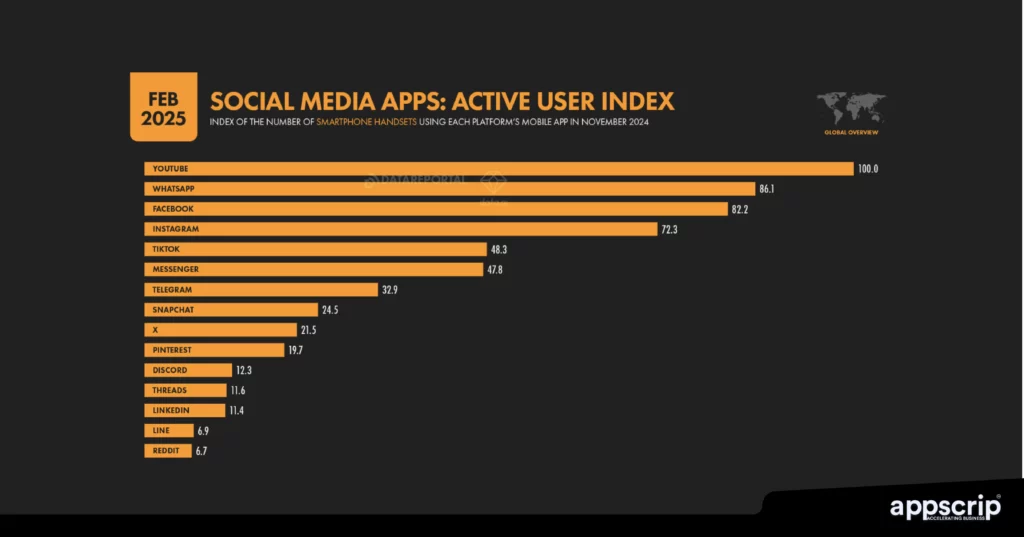
3. In-App Purchases and Microtransactions
Another source of revenue that is catching up is digital goods and enhancements available within the app.
Examples:
- Virtual Goods – Stickers, filters, avatars, and effects (e.g., TikTok gifts, Snapchat lenses).
- Boosting Posts & Profiles – Users typically pay to promote their content, which in turn gets higher visibility, and more reach (e.g., Facebook Boosts, Instagram Promotions).
Why it works? Even though the charges may seem small, they quickly add up. Users enjoy such customizations as a part of their social experience.
4. Creator and Influencer Economy
User-generated content is a strategy that works well with social media platforms and they are able to cash in on this trend. In this manner they can reward creators while finding newer ways to monetise.
Revenue Sharing from Creator Content
Platforms like YouTube, Facebook, and Instagram display ads within or alongside creators’ content, and they share a portion of the ad revenue with the creators.
Examples:
- YouTube: Creators earn a share of the ad revenue generated from their videos through the YouTube Partner Program (YPP).
- Instagram: Creators can earn from ads in their profile feed or from in-stream ads on Reels.
- Facebook: Similar to Instagram, creators can earn from in-stream ads on their videos.
Tipping & Donations
Fans can directly support creators with:
- YouTube Super Chats – Paid comments that get highlighted in live streams.
- TikTok Gifts – Users can buy virtual items and send them to creators.
- Instagram Badges & Facebook Stars – These are monetization tools that influencers and streamers can use.
Exclusive Content Platforms
Some creators take their audience off-platform for direct earnings:
- Patreon – Subscription-based exclusive content.
- Substack – Paid newsletters for engaged audiences.
- Instagram Subscriptions – Fans pay to access exclusive posts & stories.
🔹 Why it works? Fans look for more access to their favourite creators, and platforms take the opportunity to earn from such interactions.
5. Affiliate Marketing and Partnerships
Earlier platforms were just hosting products, now they even sell them. Creators and partnerships are able to sell products for platforms.
How Social Media Platforms Earn from Affiliate Sales
Creators promote products using trackable links or discount codes. When followers buy, both the creator and the platform profit from it. This is huge on:
- Instagram & TikTok Shop – Brands pay influencers to showcase products.
- YouTube Affiliate Links – Earns commission on purchases via video descriptions.
Product Tagging & Shopping Features
Platforms now allow direct product tagging in posts and videos:
- Instagram & Facebook Shops – Tag products in posts, stories, and Reels.
- Pinterest Shopping Pins – Users click and buy without leaving the app.
- TikTok Shopping – Integrates directly with brands for instant purchases.
🔹 Why it works? Social media is where people spend a considerable amount of time. When products are displayed there, it heightens their chances of a sale.
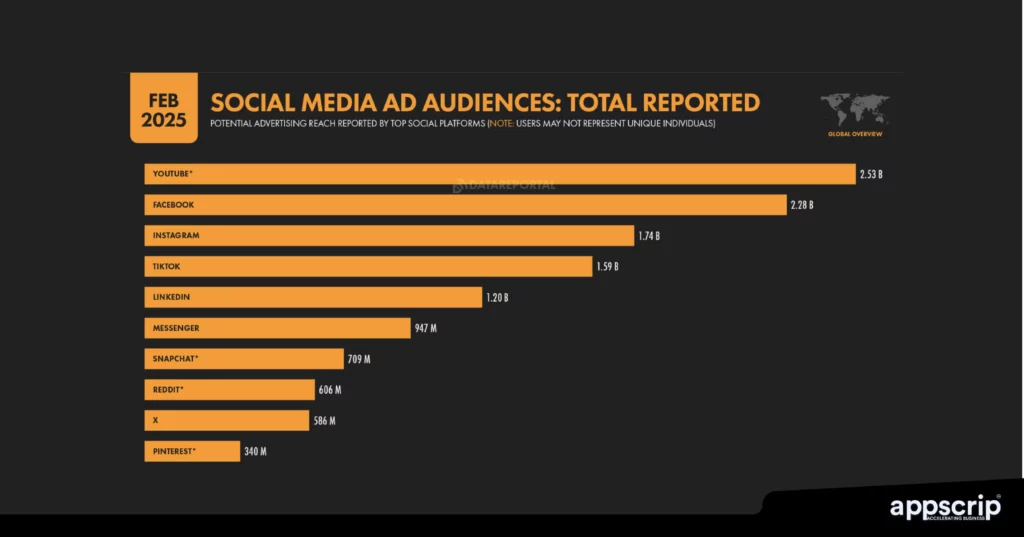
6. E-commerce Integration
Social media is turning into a giant shopping centre for users to browse, discover, and buy, all within a single app.
Social Commerce & Shoppable Posts
Instead of frustrating users by sending them on a wild goose chase, like external websites to complete a sale, platforms now keep transactions in-house:
- Shoppable Posts – Instagram, TikTok, and Pinterest let users complete the process of buying with as little as a single tap.
- Live Shopping – Creators host live streams showcasing products, this trend is particularly huge in China, and is slowly catching up all over the globe.
Examples of Social Commerce in Action
- Instagram Shop – Brands and creators sell directly on their profile.
- Facebook Marketplace – Peer-to-peer selling, like what Craigslist does, but is in fact built into Facebook.
- TikTok Shop – Influencers sell products during live videos.
🔹 Why it works? People will buy stuff if they trust the source from where the recommendations are coming. And if this turns out to be creators they know, they are all the more ready to buy. This is better than traditional ads any day.
7. Data Monetization
Social media platforms are a huge cache of user data that is garnered by collating browsing habits to engagement patterns. This data has a goldmine of information that businesses can use to their advantage.
How Anonymized Data is Used
- Market Insights – Companies pay to understand the trends on consumer behaviour.
- Ad Optimization – Advertisers get data-driven insights for better targeting.
- AI & Algorithm Training – Platforms are now able to improve content recommendations based on user interactions.
Ethical Concerns & Privacy Issues
- User Privacy – Platforms claim to anonymize data, but concerns about tracking are yet to be resolved.
- Regulations – Laws like GDPR (Europe) and CCPA (California) ensure companies are more transparent on data collection and its usage.
- Public Backlash – Scandals (like Facebook-Cambridge Analytica) have made users more cautious about how businesses use their data.
🔹 Why it works? Even when ads aren’t displayed directly, platforms can sell insights and earn a quick buck.
8. Paid Promotions & Sponsored Content
Brands know that it isn’t worthwhile to depend on traditional ads. In influencer marketing brands partner with influencers so that they are able to promote their products in an organic manner.
Brand Partnerships with Influencers
Companies are ready to invest in creators to feature their products:
- Instagram & TikTok Sponsored Posts – Creators showcase products naturally with the flow of content.
- YouTube Product Reviews – Full video integrations or short mentions.
- Snapchat & Twitter (X) Collabs – Custom filters, hashtags, and brand mentions.
Examples of Sponsored Content in Action
- TikTok Brand Deals – Brands tap into viral trends by sponsoring top creators.
- Instagram Collab Posts – Official partnership tags make paid posts look like it’s part of the flow.
- YouTube #ad Disclosures – Creators must label paid content for transparency.
🔹 Why it works? Consumers usually end up trusting influencers more than brands. Their communication and endorsements feel more authentic, which people trust and it goes with the flow, which is better than traditional ads.
9. Data Licensing and API Access
Data is today’s oil. Social media platforms garner vast amounts of data that isn’t just useful for them. Hence they take this opportunity to sell it to businesses and developers who need it.
Selling Insights to Businesses & Advertisers
- Social Listening Tools – Companies would be more than happy to pay social media platforms for access to trending topics, brand sentiment, and consumer discussions.
- Audience Insights – With the data received, brands analyse demographics and behaviour patterns to refine marketing strategies.
API Access for Third-Party Developers
- Business Integrations – Automated social media management is taken care of by using APIs (e.g., Hootsuite, Sprout Social).
- Advertising & Analytics Tools – Campaign tracking is enhanced by third-party firms by buying access to ad targeting data.
- E-commerce Syncing – Shops integrate directly with platforms for flawless transactions (e.g., Shopify’s Instagram integration).
🔹 Why it works? Businesses want real-time social data, and platforms profit by selling controlled access to it.
Emerging Monetization Trends: How Do Social Media Apps Make Money
1. Social Commerce
In-App Shopping and Product Tagging
- Now social media platforms like Instagram, TikTok, and Facebook have opened up their platforms for users to directly shop from within the app itself.
- Product tagging enables easy browsing and purchasing, and this has cut the need to visit external websites.
- AI-driven recommendations personalize the shopping experience for users as well.
Livestream Shopping
- Live events build up FOMO. Brands and influencers host live events on social media platforms and showcase products that can be purchased right away.
- Platforms like TikTok, YouTube, and Facebook Live have integrated shoppable livestreams.
- Engaging with the host is another strategy that works in favour of brands, Viewers can engage with hosts, ask questions, clear their queries and buy in real-time, enhancing sales conversions.
2. AI-Driven Personalization and Ads
Enhanced Targeting Using Machine Learning
- Vast amounts of data can be analysed using AI to get more information of user behaviour, interests, and interactions. With this audience targeting can be refined.
- Social media platforms are able to deliver highly relevant ads via deep learning.
- One of the best approaches to improving user engagement and ad conversion rates is through personalized recommendations.
Predictive Analytics for Better Ad Performance
- AI-driven analytics predict user purchasing behaviour and optimize ad placements.
- Businesses use AI insights to refine content strategies and maximize ROI.
- Dynamic ad creation adapts creatives based on real-time engagement patterns.
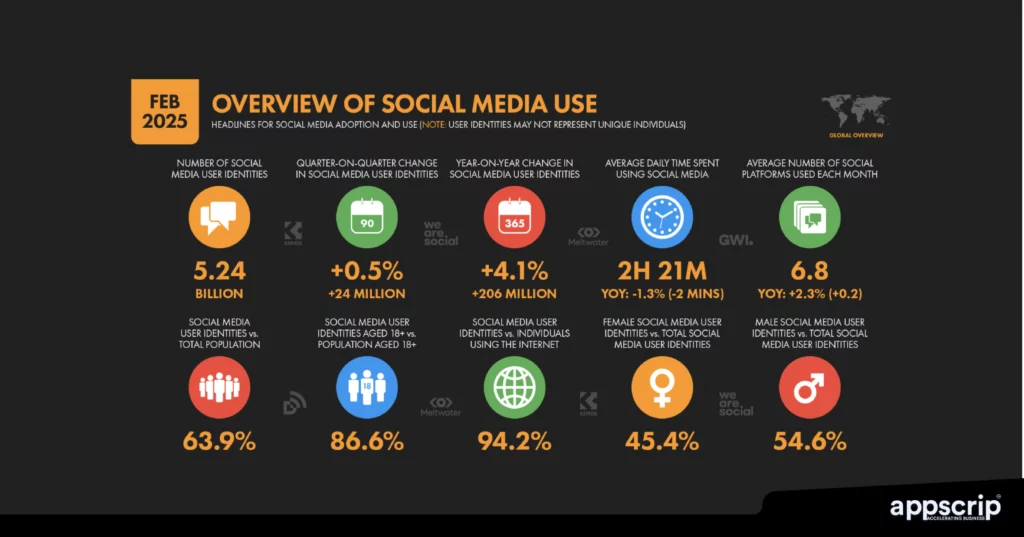
3. Blockchain and Web3 Integration
Tokenized Rewards and NFTs
- Content creators can tokenize their work into NFTs, thereby creating new revenue streams.
- Platforms like X (Twitter) and Instagram have experimented with NFT support.
- Tokenized reward systems encourage engagement, allowing users to earn cryptocurrency or digital assets.
Decentralized Content Platforms
- Blockchain-based platforms (e.g., Lens Protocol, Steemit) give creators direct control over monetization.
- Users can earn tokens through engagement, eliminating middlemen.
- Decentralization ensures content ownership, censorship resistance, and fair revenue distribution.
Case Studies of Successful Social Media Monetization
1. Facebook/Meta
- Ad Revenue Model: Targeted advertising is Facebook’s favourite strategy to generate copious amounts of revenue. Advertisers pay to display ads, this is deduced as per user data. This ensures ads reach the audience it is aimed for.
- Marketplace Integration: Users can buy and sell items locally using Facebook Marketplace. This not only increases user engagement but also provides an option for small businesses to reach their potential customers.
2. Instagram
- Influencer-Driven Monetization: Instagram encourages influencers to promote products and services on their platform. Influencers can thus earn revenue through sponsored posts, collaborations, and brand partnerships.
- Shopping: Users can purchase products directly from the app via Instagram Shopping. This feature combines easily with e-commerce platforms, thereby driving sales and revenue for businesses.
3. TikTok
- Creator Fund: TikTok encourages content creation and user engagement among content creators through its Creator Fund. The Creator Fund helps in providing financial incentives to creators for high-quality and engaging content.
- In-App Shopping: TikTok has also included e-commerce features, by which users can now shop directly from the app. This feature not only helps creators but it also supports businesses and the platform.
4. Snapchat
- AR Lenses: Snapchat has a unique means of offering interactive experience to users – AR lenses. Brands can go ahead and sponsor these lenses, thus creating engaging and shareable content that will go on to enhance brand awareness.
- Sponsored Filters: Brands can get innovative and create custom filters for specific events or locations. Now brands can increase brand exposure when users use these filters to enhance their photos and videos.
5. LinkedIn
- Premium Membership: Advanced features like detailed insights into who viewed your profile, enhanced networking tools and access to exclusive content will always have takers. LinkedIn offers users such advanced features via premium subscriptions.
- Professional Ads: Professionals and businesses are targeted by LinkedIn to promote their advertising platform. Businesses and/or advertisers can reach specific demographics, ensuring their ads are seen by the right audience.
6. YouTube
- Ad Revenue: YouTube earns a major part of their revenue through ads. These ads are displayed before, during, or after videos. Creators also have the opportunity to monetize their content through sharing of ad revenue.
- Memberships: There are takers for ad-free viewing, exclusive content and other features that YouTube offers via memberships. This enhances viewer convenience and user experience.
- Super Chats: Who doesn’t like to comment during a live stream and have it displayed to everyone on the screen. Viewers pay for such features and it turns out as a good source of revenue for content creators.
7. X (formerly Twitter)
- Subscription Model (X Premium): As in other social media platforms, premium subscription to users comes with perks such as ad-free browsing, advanced analytics and exclusive content. Even X promotes such features through their premium subscription.
- Ads: The main source of revenue for X is through targeted advertising. This is similar to how it is on other platforms.
- Tipping: X also allows users to tip content creators directly. This is an additional source of income for influencers and content creators.
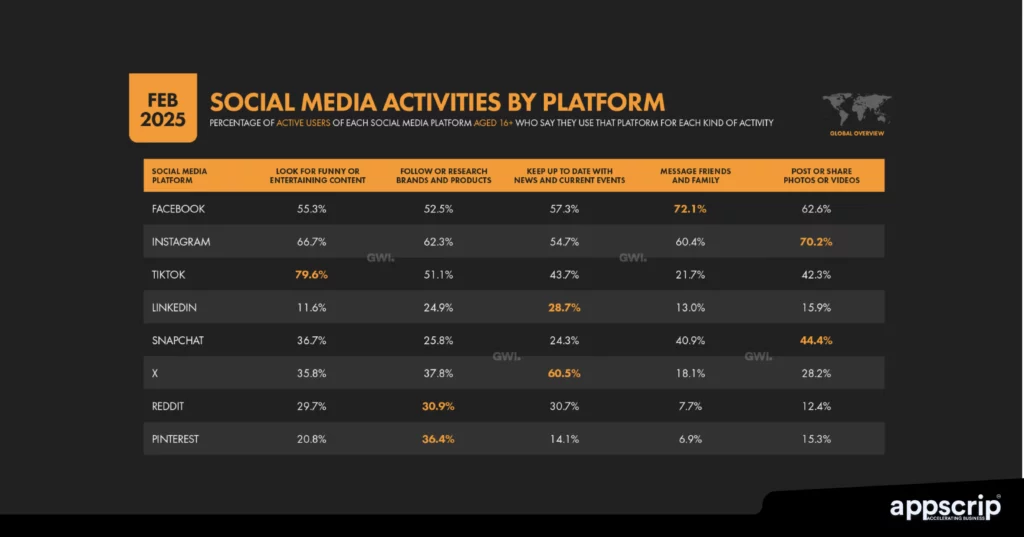
Challenges and Risks in Monetization
Monetization in social media is a precarious struggle of balancing frequency, complying with privacy regulations, ensuring a credible user experience while staying competitive. Platforms must work around these challenges to ensure success and user retention.
1. Ad Saturation and User Fatigue
- Ad Saturation: When you display too many ads you risk users losing patience. They may end up being overwhelmed and may not respond to actions which could lead to decline in revenue and ad effectiveness.
- User Fatigue: It is imperative for platforms to carefully manage ad frequency so as to maintain user engagement. Too many ads can lead to user fatigue. Thus users may ditch you platform and not spend too much time on it.
2. Privacy Regulations and Data Protection
- Regulatory Compliance: It is imperative to follow privacy regulations without compromise. GDPR in Europe and CCPA in California are a couple of regulations that need strict compliance or businesses could face punitive action, resulting in significant fines and legal issues.
- Data Protection: Platforms must invest in robust security measures to safeguard user information and maintain trust. Protecting user data from breaches and unauthorized access is crucial.
3. Balancing User Experience with Revenue Goals
- User Experience: Even though revenue generation is top concern for businesses, this should not hurt user experience. Platforms need to ensure that ads and other revenue-generating features work without hampering user experience and do not frustrate user interactions.
- Revenue Goals: Achieving revenue goals while maintaining user satisfaction is a juggling act. Platforms can experiment with different monetization methods to find the one that works out well for them.
4. Competition from New Platforms
- Emerging Competitors: There will always be competition. Hence firms must be ready to innovate and introduce new features to keep users engaged and loyal to their platform. These new platforms can cannibalise users from established platforms, unless they come up with strategies to overcome such challenges.
- Innovation Pressure: Platforms must continuously innovate and adapt to stay competitive and profitable. There are several ways to do this, like improving the UI and UX, enhancing privacy features, and finding newer ways to monetise.
Conclusion: How do social media apps make money
Social media apps have changed how we connect, share, and do business. They offer a unique platform for individuals to engage with like-minded communities and for businesses to reach highly targeted audiences. As the domain continues to evolve, monetization strategies through advertising, in-app purchases, subscriptions, and more—demonstrate their amazing potential for generating revenue.
For those looking to capitalize in this dynamic space, Appscrip is your best bet as a proven app development company. We are the go-to tech solution provider for startups across various industries, including on-demand, delivery, content subscription, social, logistics, dating, and shopping platforms.
Whether you’re an entrepreneur with a groundbreaking idea or a business looking to expand your digital footprint, Appscrip is here to be your technology partner. Want to know more, get in touch.


